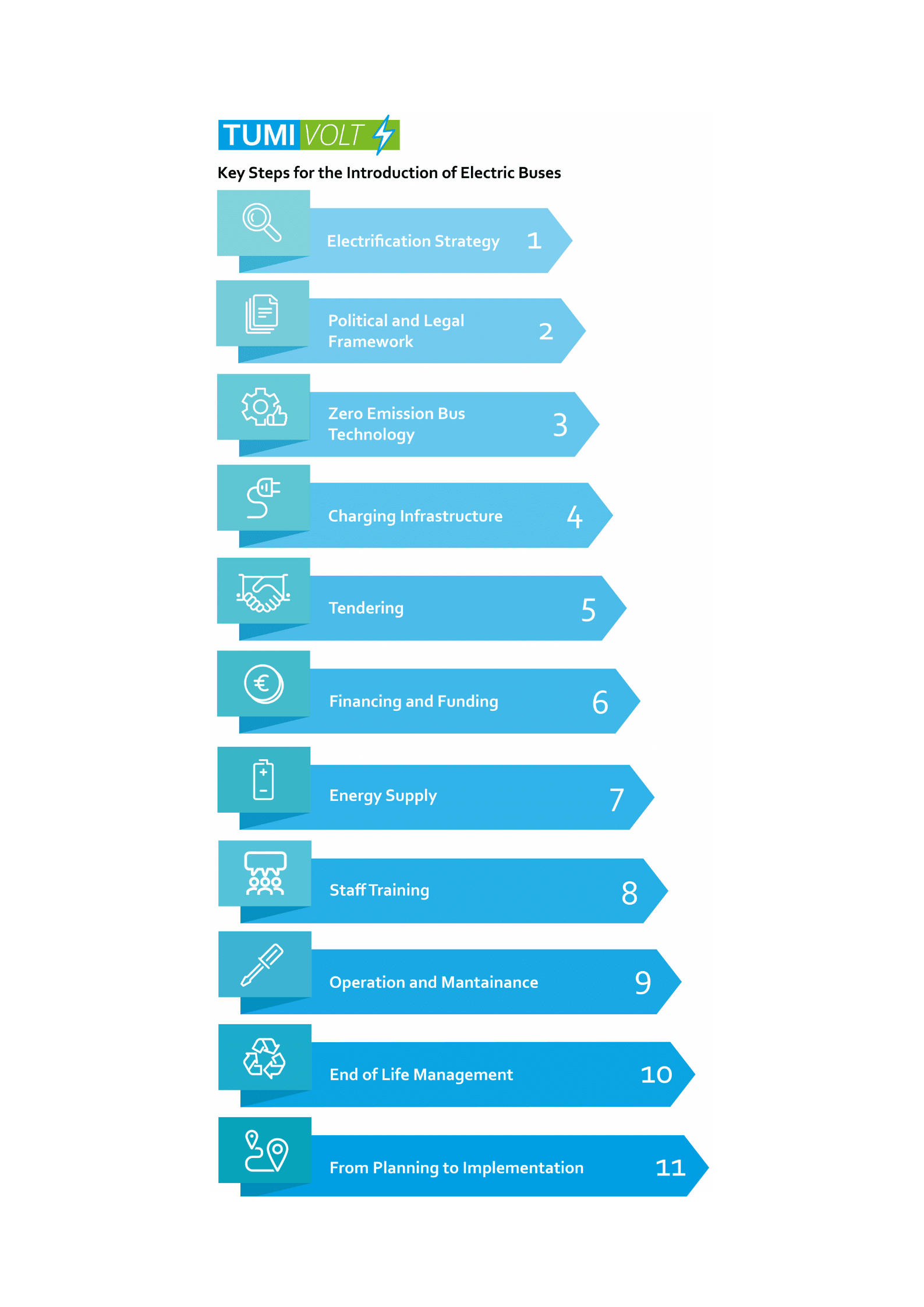Checklist: Key Steps for the Introduction of E-Buses
Here you can find the key steps necessary for the succesful introduction of e-buses.
Here you can find the key steps necessary for the succesful introduction of e-buses.

Ambitious steps are needed to limit global warming and to achieve the goals of the Paris Agreement. The electrification of urban buses is considered an important element in the decarbonization of urban transport. It also helps to reduce local air pollution and increase the quality of life in urban areas. Considering the early experiences already gained worldwide with e-buses, cities can move ahead and switch their transport systems to zero emission bus technology. Internationally, numerous cities like Shenzhen, Kolkata, Berlin and Santiago are investing in low-emission bus technologies, such as battery electric and fuel-cell electric buses.

The introduction of electric buses presents decision-makers and (public) bus operators in cities with a multitude of new challenges. The planning of the bus fleet renewal goes way beyond the traditional procurement of conventional vehicles. In many cases, the electrification of bus fleets will require the introduction of a new ecosystem build around innovative charging solutions as well as different ways of operation and maintenance. With our “How to” checklist TUMI provides a structured list of questions with an aim to help key stakeholders in understanding the step by step e-bus project implementation planning. With our easy-to-use guideline for action we prepare cities in transforming their public transport for the electric future.
Define the roles of involved agencies (public transport authorities, public transport operators, e-bus/charging station providers, etc.)
Define the business model of the E-bus operation at following levels:
Consult the relevant stakeholders in the market with an aim to:
Which of the following operation optimization services should be procured?
Things to keep in mind during tendering process:
Get started! Don’t wait to start electrifying your public bus fleet!
E-Mail Address:
info@transformative-mobility.orgYou need to load content from hCaptcha to submit the form. Please note that doing so will share data with third-party providers.
More InformationYou need to load content from reCAPTCHA to submit the form. Please note that doing so will share data with third-party providers.
More InformationYou are currently viewing a placeholder content from Turnstile. To access the actual content, click the button below. Please note that doing so will share data with third-party providers.
More Information